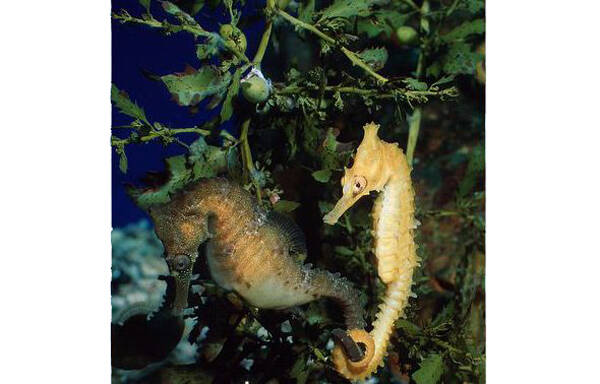White’s seahorse is a species of Syngnathidae in the order Acanthopterygii of the class Actinopterygii.

White’s seahorse is carnivorous, feeds on small crustaceans, and is ovoviviparous.
The reproduction method of the White Seahorse is very special. First of all, the reproduction of the White Seahorse is not completed by the female White Seahorse, but by the male White Seahorse. When the female White Seahorse transfers the egg into the male White Seahorse's brood pouch, it will be able to successfully produce a baby seahorse after 2-3 weeks. At this stage, the White Seahorse group will come to the shallower sea area to reproduce, usually the sea water depth is about 10-30 meters. The number of newly born White Seahorses can reach thousands, and the body length is between 6 mm and 1 cm.
The White Seahorse is currently facing a very dangerous situation, that is, millions of White Seahorses will be captured by humans every year, some of which are used as medicinal materials, and some are raised as ornamental fish.
The IUCN Red List is listed as Data Deficient (DD)
Listed in the second level of the "List of National Key Protected Wildlife in China" (only for wild groups, all seahorses).
Protect wild animals and eliminate game.
Maintaining ecological balance is everyone's responsibility!